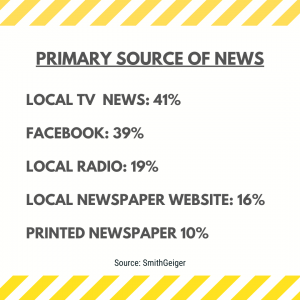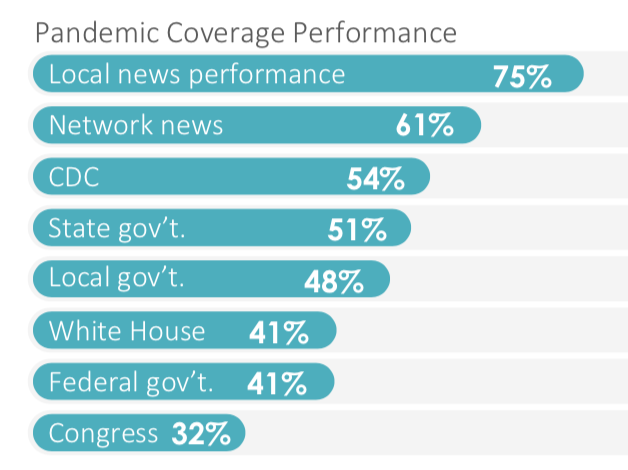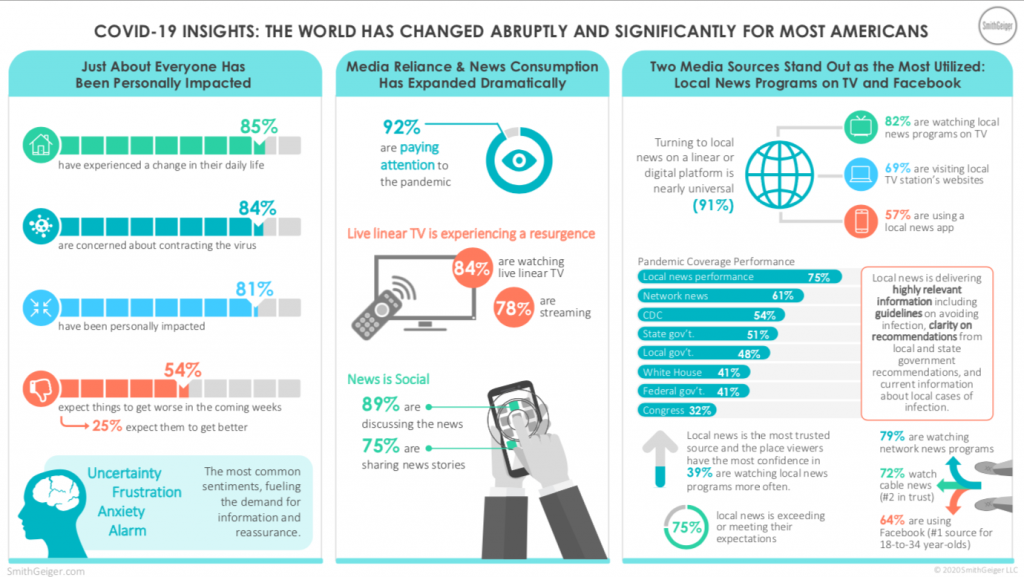A friend in need is a friend indeed, as the saying goes. It’s hard to think of a time when local audiences have been more ‘in need’ of information to keep safe than during this global coronavirus pandemic. New research by SmithGeiger finds that local audiences in this time of need are turning first to two sources: Local TV news and Facebook.
“Many outlets are up,” noted Seth Geiger, President of SmithGeiger, which conducted the research. “But local TV news is at the top of the list” in the online survey of 1305 adults ages 18-64 nationwide conducted by SmithGeiger on March 18 and 19.

The engagement with local TV news was multi-platform. Majorities reported watching local TV news on-air (82%), visiting a local station website (69%) and using a local station’s news app (57%).

Respondents also gave local TV news top marks for performance in serving the audience, with 75% saying local TV news coverage “met or exceeded” their expectations. That topped TV networks and even the CDC as a source. The White House, Federal Government and Congress received the lowest marks.

On matters of trust, SmithGeiger found a newsworthy divide: “The more you watch local TV news the more you trust it; the more you use Facebook, the less you trust it,” said Seth Geiger. The heaviest users of Facebook trusted it less as a source than casual users, according to the survey.
What are local TV news stations doing that audiences value most? Geiger said the keys include: delivering highly relevant information including guidelines on avoiding infection, clarity on recommendations from local and state government recommendations, and current information about local cases of infection.
The results are consistent with and complemented by a report published on April 7 by the New York Times titled “The Virus Changed the Way We Internet”. The Times did not report on local TV audiences, but found that for newspapers, online traffic to trusted local news sites like the Seattle Times and Boston Globe had grown the most, up by 100-150% between January and March; traffic to established national online news sources like the New York Times and Washington Post had grown by more than 50%; whereas traffic to national “partisan” sites was generally flat or up only slightly. The report doesn’t editorialize on those results, but the numbers suggest that when information is critical, consumers choose more reliable sources.
Geiger offered this way to frame the ways local audiences use different sources. “Google is utility: Tell me what I need to know. Facebook is connectivity: Who can I share this with? Local TV news is relevance: What do I need to know?”
“Local TV news has become the most important source of information that’s personally relevant to you,” said Geiger, “and communicating that there are decisions you can make that make you and your community safer.”
Research Findings:
SmithGeiger, March 18-19, 2020

